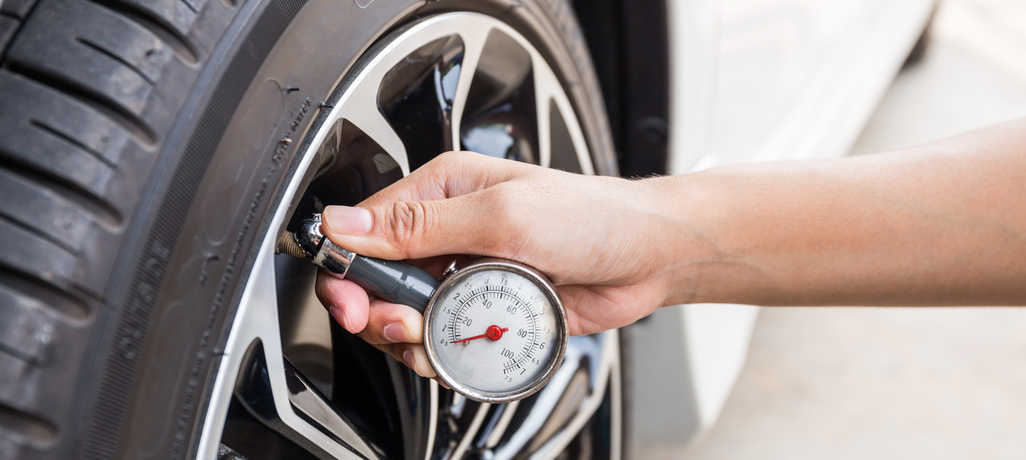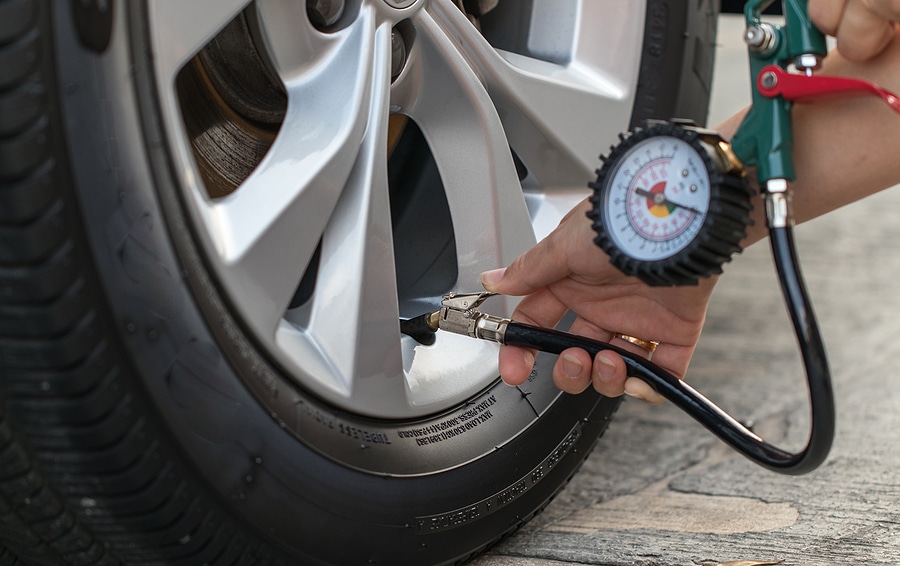Maintaining the proper inflation of your tires is both easy and crucial for optimal vehicle performance.
Tires that are properly inflated offer several advantages, including extended lifespan, improved fuel efficiency, quicker steering responses, and a smoother ride compared to tires that are not correctly inflated.
Both underinflation and overinflation can lead to issues such as premature tread wear and even tire failure. To get the best performance from your tires, it’s recommended to check your tire pressure monthly.
Using a tire pressure gauge is a straightforward task. Here’s a step-by-step guide on how to check your tire pressure and inflate your tires when necessary.
Items You Need When Checking Tire Pressure
- Tire pressure gauge
- Air compressor
- Pen and paper
Tire pressure gauges are available in digital or standard versions, both of which are commonly sold at auto parts stores.
Many auto parts stores also offer portable air compressors that can be powered through your car battery or 12v power port.
Alternatively, most gas stations are equipped with air compressors, which typically cost around $0.50 to $1.00 to use.
How to check Tire Pressure
1. Start with Cold Tires If Possible
Vehicle manufacturers specify tire pressure in PSI (pounds per square inch) for cold tires.
Tires are considered cold if the vehicle has been parked for three or more hours or if the vehicle has been driven for less than a mile (1.6 km) at moderate speed.
PSI is the unit of measurement used by your pressure gauge to display the tire’s inflation.
2. Check the Manufacturer’s Recommended PSI
To find the recommended cold tire PSI for your vehicle, look on the driver’s side door jamb or consult your owner’s manual.
If this information is not readily available, you can reach out to your vehicle dealer, manufacturer, or a professional tire expert for guidance.
3. Write down the PSI for Each Tire
If the required PSI is different for your front and rear tires, make sure to write down the correct PSI for each tire to avoid confusion when checking the pressure.

4. Check Tire Pressure With Your Gauge
Begin by removing the valve cap from one of your tires. Then, attach the pressure gauge to the valve stem and apply enough pressure to stop the hissing sound and ensure the gauge provides a reading.
If you’re using a standard gauge, a small bar will be pushed out from the bottom, and you can read the measurement from the markings on the bar. If you’re using a digital gauge, the reading will appear on a screen.
Record the reading and repeat the process for all four tires.
5. Fill To The Recommended PSI
If any tire is underinflated, use an air compressor to add air. Air compressors vary in design, so be sure to read and follow the instructions for correct use.
When using an air compressor at a gas station, park your vehicle so the hose can reach all four tires.
Insert the required change into the machine, and listen for the motor to start. Then, fill each tire by placing the hose over the valve stem and pressing the lever.
Keep in mind that if you are using a gas station air compressor, the tires may be “hot.”
If tire inflation is necessary while the tires are hot, increase the pressure by 4 PSI (14 kPa) above the recommended cold inflation pressure. After driving, recheck the tire pressure once the tires have cooled down.
After filling the tires, use the pressure gauge to check the inflation again. It’s fine if the tires are slightly overinflated at this point, as you can always release a small amount of air.
Never drive on overinflated tires, as this can lead to reduced traction, quicker tire wear, and less effective impact absorption.
6. Check Tire Pressure Monthly
Make it a habit to check your tire pressure every month. Regular checks ensure that your tire pressure remains close to the optimal level, preventing it from dropping too low.
Tire Pressure Gauge Accuracy
Accuracy is crucial when choosing a tire pressure gauge. For just a few dollars, you can purchase a high-quality, accurate gauge that will give you reliable readings.
If you’re uncertain which gauge to buy, it’s a good idea to ask a professional technician for recommendations.
Digital tire pressure gauges tend to provide very accurate readings but require batteries for operation.
If the thought of replacing batteries may discourage you from using a digital gauge, a standard gauge could be a better option.
It’s always better to use your own personal gauge rather than relying on the ones attached to air hoses at service stations.
These station gauges are often exposed to wear and may give inaccurate readings.

